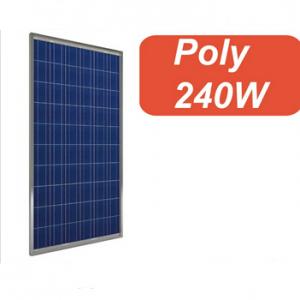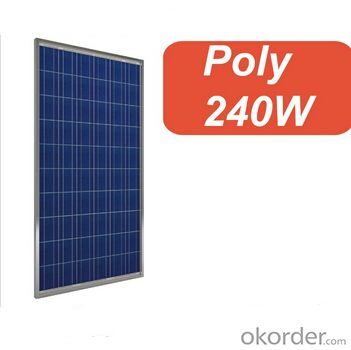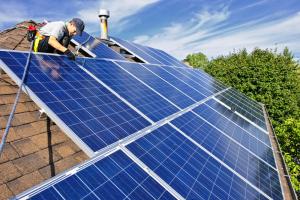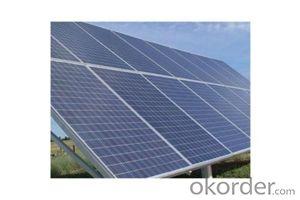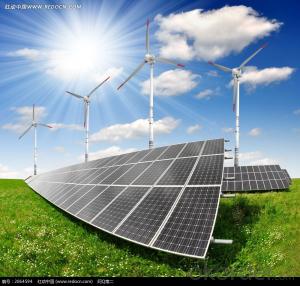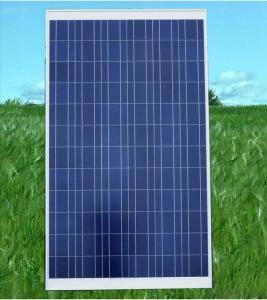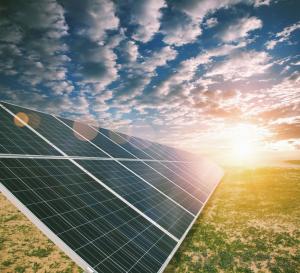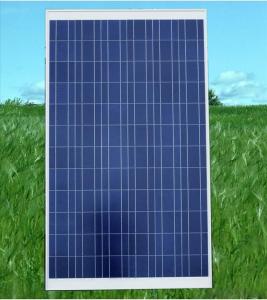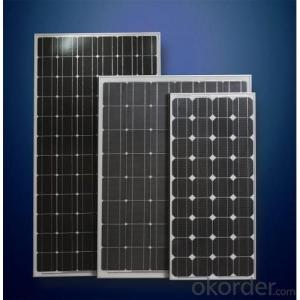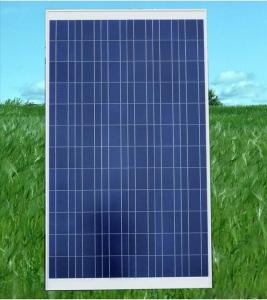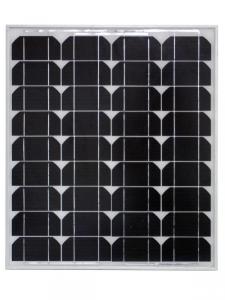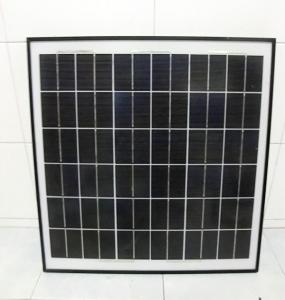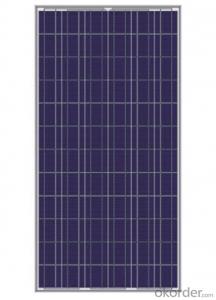Small Solar Panels for Lights:240W Polycrystalline Solar Module
- Loading Port:
- SHANGHAI
- Payment Terms:
- TT or LC
- Min Order Qty:
- 6000 watt
- Supply Capability:
- 10000000 watt/month
OKorder Service Pledge
OKorder Financial Service
You Might Also Like
Description:
Solar modules use light energy (photons) from the sun to generate electricity through the photovoltaic effect.
The majority of modules use wafer-based crystalline silicon cells or thin-film cells based on cadmium telluride or silicon.
The structural (load carrying) member of a module can either be the top layer or the back layer.
Cells must also be protected from mechanical damage and moisture. Most solar modules are rigid, but semi-flexible ones are available,
based on thin-film cells. These early solar modules were first used in space in 1958.
CNBM Solar photovoltaic (PV) Panel is designed for large electrical power requirements.
It is the optimal choice for both on-grid and off-grid power systems.
CNBM Solar panel offers high performance of power per square foot of solar array.
Monocrystalline silicon(c-Si): often made using the Czochralski process. Single-crystal wafer cells tend to be expensive,
and because they are cut from cylindrical ingots, do not completely cover a square solar cell module without a substantial waste of refined silicon.
Hence most c-Si panels have uncovered gaps at the four corners of the cells.
Characteristics of Solar Monocrystalline
I. Solar Cell : High efficiency crystalline solar cell.
Even if under the weak light, the solar module can produce maximum power output.
II. Tempered glass (toughened glass): Anti-reflecting coating and high transmission rate glass increase
the power output and mechanical strength of solar module.
III. EVA and TPT: Using high quality EVA and TPT to prevent destroying and water.
IV. AI frame: Without screw, corner connection. 6 holes on the frame can be installed easily.
V. Junction box: Multi function junction box with water proof.
VI. Long lifetime: ≥25 years; Less power decrease.
VII. Good performance of preventing from atrocious weather such as wind and hails.
VIII. Resisting moisture and etching effectively, not effected by geology.
IX. The certificate issued by international authority: UL, TUV, IEC, VDE, CE.
Characteristics | Unit | 240W |
Maximum Power (Pmax) | W | 240 |
Power Tolerance | W | (0,+5) |
Maximum Power Voltage (Vmp) | V | 30.50 |
Maximum Power Current (Imp) | A | 7.86 |
Open Circuit Voltage (Voc) | V | 37.70 |
Short Circuit Current (Isc) | A | 8.50 |
Module Efficiency (ηm) | % | 16.35 |
Dimension of module | mm | 1480*992*40mm(64.6*39.1*1.6inch) |
Pmax Temperature Coefficient | %/C | -0.44 |
Voc Temperature Coefficient | %/C | -0.32 |
Isc Temperature Coefficient | %/C | 0.44 |
Maximum System Voltage | VDC | 1000(TUV);600(UL) |
Maximum Series Fuse Rating | A | 15 |
Operating Temperature | C | -40~ +85 |
NOCT | C | 45±2 |
STC:1000W/m2.AM1.5 and 25C cell temperature, NOCT : Nominal Operating Cell Temperature | ||
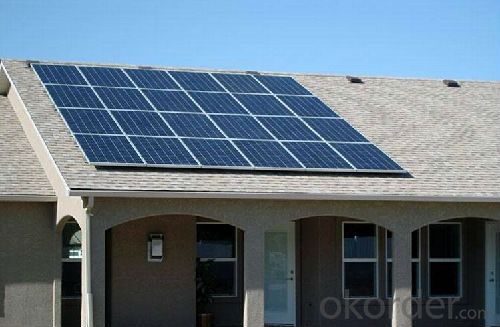
FAQ:
1. How long will my inquiry get response?
Your inquiry related to our products or prices will be replied within 24 hours.
2. Can I get professional service and suggestion?
Well-trained and experienced staffs to answer all your questions in fluent English.
3. Do you accept OEM or customized design?
OEM & ODM, any your customized lightings we can help you to design and put into product.
4. What if I need specific design?
Distributorship are offered for your unique design and some our current models.
- Q: Can solar panels be installed on a barn or agricultural building?
- Yes, solar panels can be installed on a barn or agricultural building. In fact, these structures often provide ideal conditions for solar panel installation due to their large, unobstructed roofs and proximity to open spaces that receive ample sunlight. Installing solar panels on barns or agricultural buildings can help farmers and landowners generate renewable energy, reduce electricity costs, and contribute to a more sustainable future.
- Q: Can solar panels be installed on military installations?
- Yes, solar panels can be installed on military installations. In fact, many military bases around the world have already adopted solar energy as a sustainable and cost-effective solution for their power needs. The installation of solar panels on military bases helps reduce reliance on fossil fuels, enhances energy security, and contributes to environmental conservation.
- Q: Can solar panels be used for charging electric bicycles?
- Yes, solar panels can be used for charging electric bicycles. By connecting the solar panels to a charge controller and then to the electric bicycle's battery, the energy from the sun can be converted into electrical energy to charge the bike's battery. This allows for a sustainable and renewable way of charging electric bicycles.
- Q: Can solar panels be installed on schools or educational campuses?
- Yes, solar panels can be installed on schools or educational campuses. Installing solar panels on educational institutions not only helps to reduce their carbon footprint but also serves as a practical learning tool for students, showcasing the benefits of renewable energy. Additionally, solar panels can provide cost savings on electricity bills, allowing schools to allocate more resources towards education.
- Q: Are there any tax credits available for installing solar panels?
- Yes, there are tax credits available for installing solar panels.
- Q: Can solar panels be used in areas with high levels of saltwater?
- Yes, solar panels can be used in areas with high levels of saltwater. However, it is important to choose solar panels that are specifically designed for such conditions and have corrosion-resistant materials. Additionally, regular maintenance and cleaning of the panels may be required to prevent damage from salt build-up.
- Q: cheapest price for a 20 watt solar panel sold on line
- Solar panels installed are roughly $0/watt in commercial quantities. Bare panels? Do a google search and see what you can find. But for the record, there are panels and there are panels. Stuff from China put together in a shed somewhere will not perform in the same way as some of the new thin-film amorphous panels coming out of the US and Europe. So, in many ways you get exactly what you pay for.
- Q: Can solar panels be used in areas with high levels of electromagnetic radiation?
- Yes, solar panels can be used in areas with high levels of electromagnetic radiation. While electromagnetic radiation can potentially interfere with the functioning of electronic devices, solar panels are designed to withstand various environmental conditions. They are typically equipped with protective measures, such as grounding and shielding, to minimize the impact of electromagnetic radiation. Therefore, as long as the solar panels are installed correctly and maintained properly, they can continue to generate electricity efficiently even in areas with high levels of electromagnetic radiation.
- Q: How can I know the right type of solar panel to choose for my small village house in Africa?
- The power output of a solar panel uses a formula to determine kilowatts produced per hour per square meter per day. This calculation is important because, if you plan to install a solar power system for your home, you will want to know how many solar panels will be needed. To calculate solar power requirements correctly, you need to gather the data that is needed for the calculation. First you have to find the average amount of solar radiation available for your area. You can use a solar radiation chart. This can range from a 4 to a 7 depending on the area you live in. Write the number down on a piece of paper and indicate it with the letters RA. Next is determine the amount of electricity that you use daily. Add the kilowatt-hours used per month from your utility bill. Multiply this number by ,000 to get the watt hours in a month. Divide the total by 30 for the amount of electricity you use daily. Write this number down and indicate it with the letters DE. Determine the percentage of your home that you want to power with the solar power system. Write this number down and indicate it with the letter P. Determine the system inefficiency factor for the solar power system. You should be able to find this on the brochure for the system or from the manufacturer's web site. Write this number down and indicate it by the letter I. Determine the power or yield that is required for your home. Use the equation P = I x (DE x P) / RA to find the power requirements in kWh. Divide the number from Step 5 by the peak wattage for a single solar panel to determine the number of panels you will need for your home. Goodluck! :)
- Q: How do solar panels affect the property's overall sustainability?
- Solar panels can greatly enhance a property's overall sustainability by generating clean and renewable energy from the sun. By reducing reliance on fossil fuels and lowering carbon emissions, solar panels contribute to a greener environment. Additionally, solar energy can help reduce electricity bills and provide a reliable and independent source of power, making the property more self-sufficient and resilient.
Send your message to us
Small Solar Panels for Lights:240W Polycrystalline Solar Module
- Loading Port:
- SHANGHAI
- Payment Terms:
- TT or LC
- Min Order Qty:
- 6000 watt
- Supply Capability:
- 10000000 watt/month
OKorder Service Pledge
OKorder Financial Service
Similar products
Hot products
Hot Searches
Related keywords
